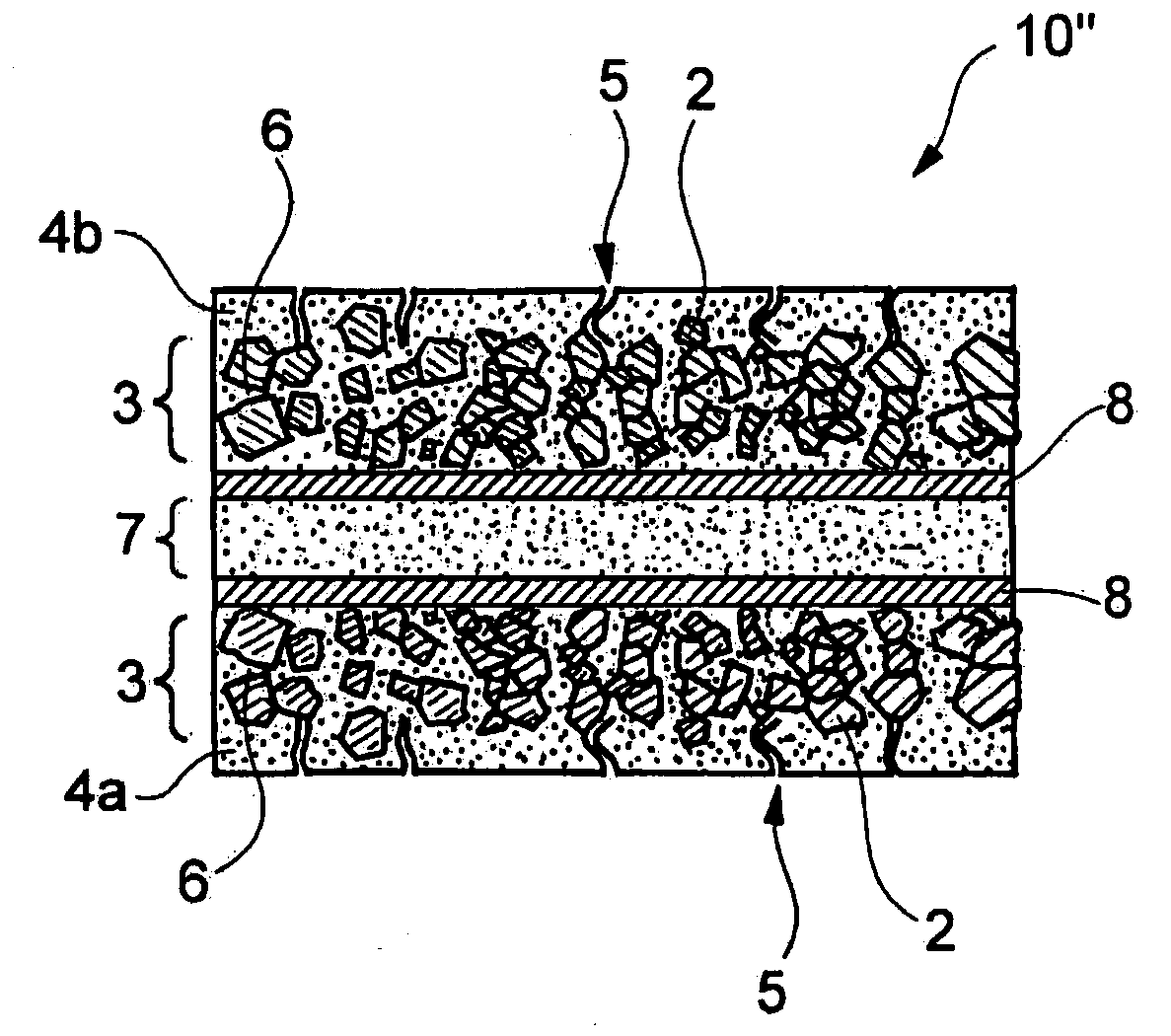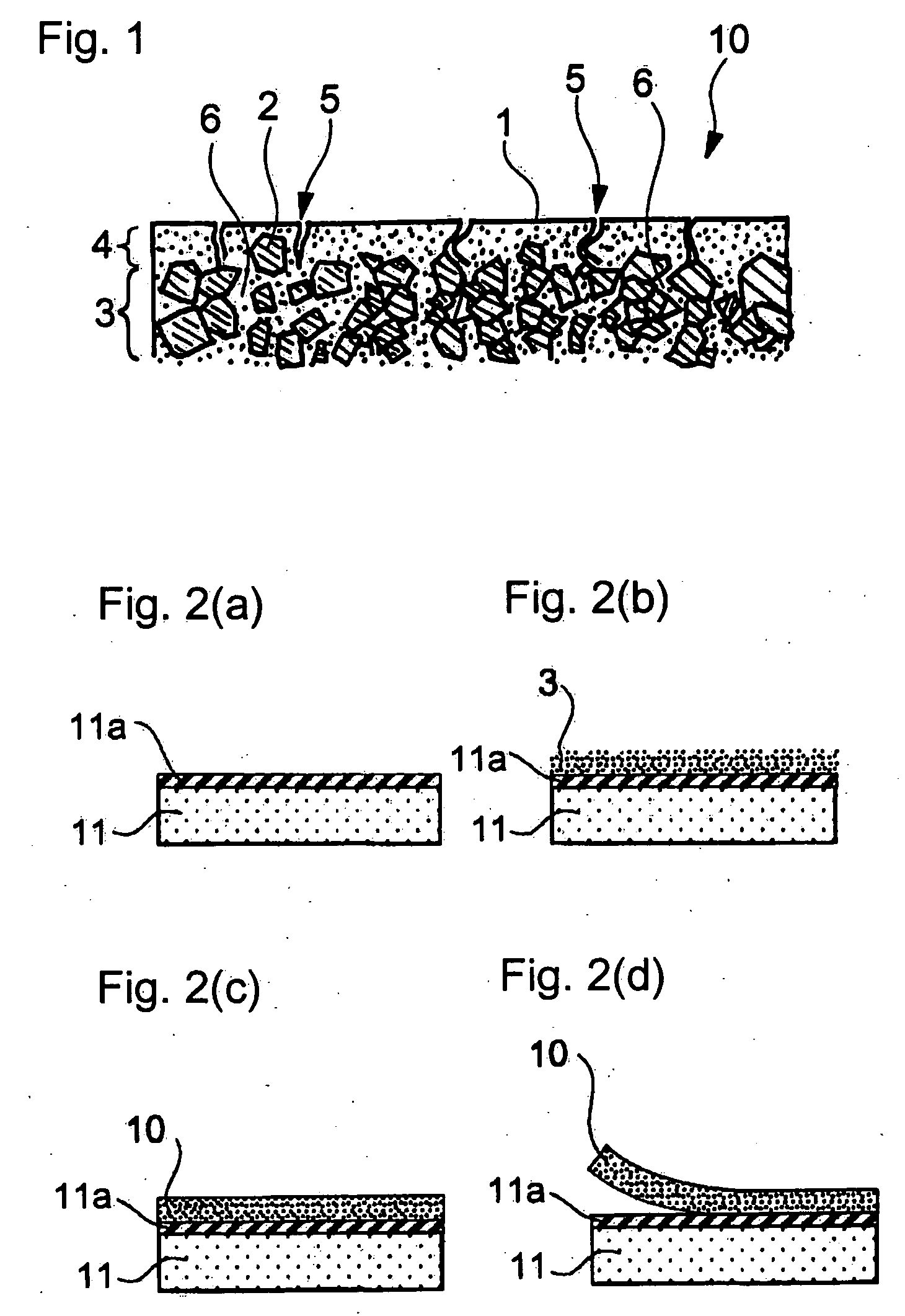Electrode for secondary battery, process of producing the electrode, and secondary battery
a secondary battery and electrode technology, applied in the field of electrode electrode for a secondary battery, can solve the problems of collector type electrodes, easy oxidation or corrosion of active materials, and difficulty in increasing energy density,
- Summary
- Abstract
- Description
- Claims
- Application Information
AI Technical Summary
Problems solved by technology
Method used
Image
Examples
example 1
(1) Preparation of Active Material Particles
[0099] Raw materials of a hydrogen storage alloy were weighed out and mixed to give an alloy composition of MmNi4.45Mn0.45Al0.30Co0.10. The mixture was put into a crucible, and the crucible was set in a high frequency induction furnace, and the furnace was evacuated to 1.33×10−2 Torr or lower. After the mixture was melted in an argon atmosphere, it was poured into a water-cooled copper mold and cast at 1430° C. to obtain an alloy. The alloy was heat treated at 1060° C. for 3 hours in an argon atmosphere to give a hydrogen storage alloy as an ingot. The ingot was ground and sieved into three fractions: 53 μm.
2) Preparation of Active Material Slurry
[0100] A slurry having the following composition was prepared using the 20-53 μm fraction of the hydrogen storage alloy.
Active material particles 50%
Acetylene black (particle size: 0.1 μm) 8%
Binder (styrene-butadiene rubber) 2%
3) Formation of Release Layer
[0101...
example 2
[0106] An anode having the structure shown in FIG. 1 was produced in the same manner as in Example 1, except for using the <20 μm fraction in place of the 20-53 μm fraction of the hydrogen storage alloy. An electron micrograph taken of a cut area of the resulting anode is shown in FIG. 8. An electron micrograph taken of the current-collecting surface layer of the anode that had faced the copper foil is shown in FIG. 9. While the micrograph of FIG. 8 does not clearly show the current-collecting surface layer that had faced the copper foil, FIG. 9 verifies the formation of the current-collecting surface layer with microvoids on the side that had faced the copper carrier foil. It was also confirmed that the active material layer was covered with the surface layer of that side and the active material particles were not exposed on the surface.
example 3
[0107] An anode having the structure shown in FIG. 1 was produced in the same manner as in Example 2, except for changing the plating time from 1180 seconds to 413 seconds. An electron micrograph taken of a cut area of the resulting anode is shown in FIG. 10. While not shown in the drawings, electron microscopic observation of the surface that had faced the copper carrier foil revealed the formation of the current-collecting surface layer with microvoids on that side. It was also confirmed that the active material layer was covered with that surface layer and the active material particles were not exposed on the surface.
PUM
| Property | Measurement | Unit |
|---|---|---|
| thickness | aaaaa | aaaaa |
| total thickness | aaaaa | aaaaa |
| total thickness | aaaaa | aaaaa |
Abstract
Description
Claims
Application Information
 Login to View More
Login to View More - R&D
- Intellectual Property
- Life Sciences
- Materials
- Tech Scout
- Unparalleled Data Quality
- Higher Quality Content
- 60% Fewer Hallucinations
Browse by: Latest US Patents, China's latest patents, Technical Efficacy Thesaurus, Application Domain, Technology Topic, Popular Technical Reports.
© 2025 PatSnap. All rights reserved.Legal|Privacy policy|Modern Slavery Act Transparency Statement|Sitemap|About US| Contact US: help@patsnap.com



